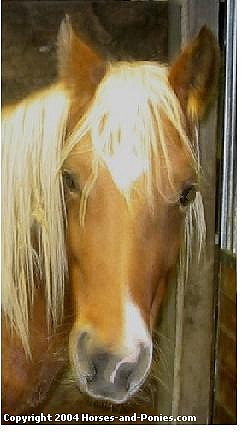The Equine Species Working Group (ESWG) was created to review the National Animal Identification System (NAIS) and the possible participation of the horse industry in the program, should it become mandatory in the future. The ESWG is committed to developing recommendations for a national equine identification plan which are in the best interests of, and protect the rights of, horse owners and breeders.On August 1, 2006, the ESWG made recommendations to the NAIS Subcommittee on how the equine industry might reach NAIS compliance in the future. Each of the different species working groups report to the NAIS Subcommittee, which in turn reports to the Secretary of Agriculture’s Advisory Committee on Foreign Animal and Poultry Diseases. There were two key points that were the focus of the ESWG report: movement and identification.
Reportable movements are a major concern and topic of discussion with the ESWG. Because of the extensive daily movement of horses not only intra- and interstate, but internationally, the ESWG decided to focus on those horses that are at the greatest risk of being exposed to and/or spreading disease. In recognizing the heavy burden that would be placed on horse owners or premises managers/owners by a reporting mechanism, it was recommended by the ESWG that the horse industry continue to rely on the current regulatory mechanisms in place for horses that move. These regulations that require a brand inspection, Certificate of Veterinary Inspection (CVI), VS-127 Permit or International CVI prior to movement will serve as the starting point for trace back in the event of a disease outbreak.
“The recommendation not to report any equine movements was one that went through much discussion, and one that we feel is very important,” says ESWG Co-Chair Dr. Marvin Beeman. “Although it may not achieve the ideal goal of the NAIS, the current practices will cover those horses at the greatest risk. It is the most practical solution at this time, as there will be no additional burden placed on horse owners or premises owners and managers.”
Each of the previously mentioned regulatory documents are kept and maintained in either the state/country of origin, the state/country of destination or both. Each document contains information as to the horse’s point of origin and its point of destination. In the event of a disease concern, federal and state animal health officials would be able to access that information. Most importantly, with the exception of the one-time official identification of the horse, these are practices currently being met by horse owners who move their horses and therefore will not require the establishment of new business practices in the industry.
The other focus of the ESWG report was equine identification. Standardization of the identification practices in the horse industry is a major focus of the ESWG. With standardization, the horse industry would be able to ensure that the impact of an equine disease emergency could be quickly managed and controlled to benefit the veterinary welfare of the horse and re-establish normal movements as soon as possible. The ESWG recommends that states standardize requirements for Certificates of Veterinary Inspection (CVIs) and that, for NAIS compliance, horses should be identified with the ISO/ANSI compatible RFID chip (11784/85, 134.2 kHz), implanted in the nuchal ligament on the left side, in the middle third of the neck, halfway between the ears and the withers.
The ESWG also recommended that official identification is necessary when a horse is transported to any premises where a brand inspection, CVI, VS 127 permit, or International Certificate of Veterinary Inspection is required.
The ESWG is the designated United States Department of Agriculture (USDA) working group for horses on the issue of the National Animal Identification System (NAIS). It is the working group’s responsibility to review and evaluate the NAIS and the possible participation of the horse industry in the program, as well as developing recommendations for a national equine identification plan that is in the best interests of, and protects the rights of, horse owners and breeders.
